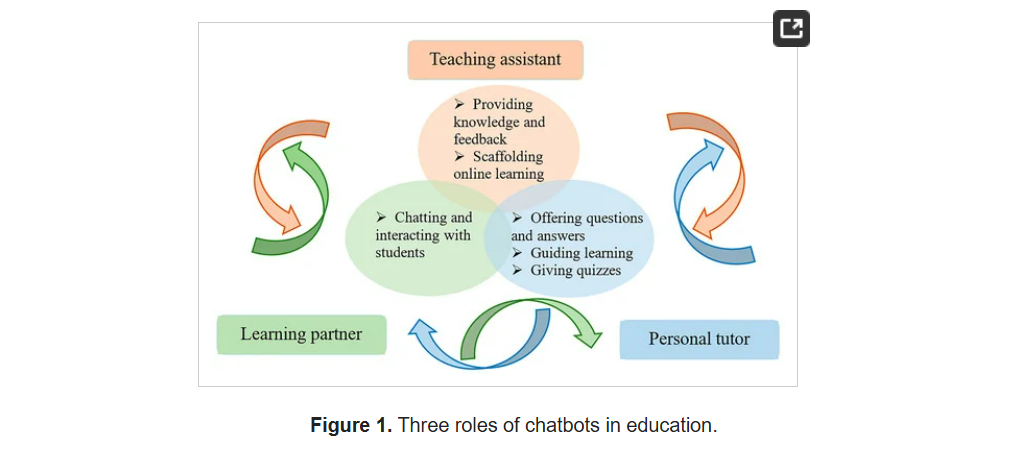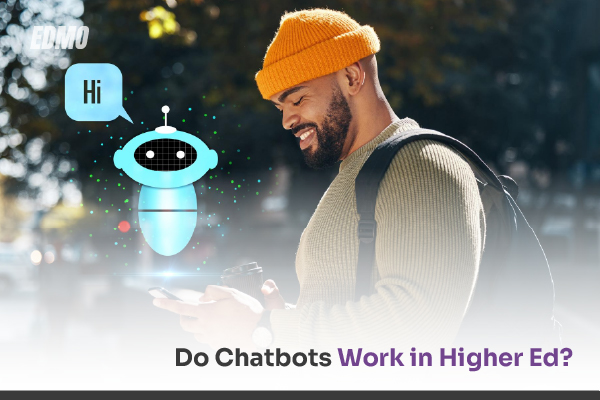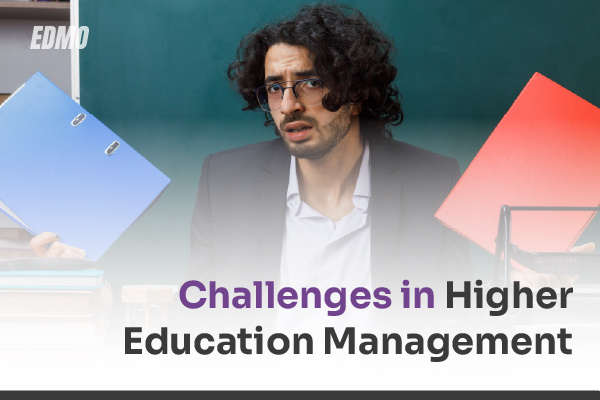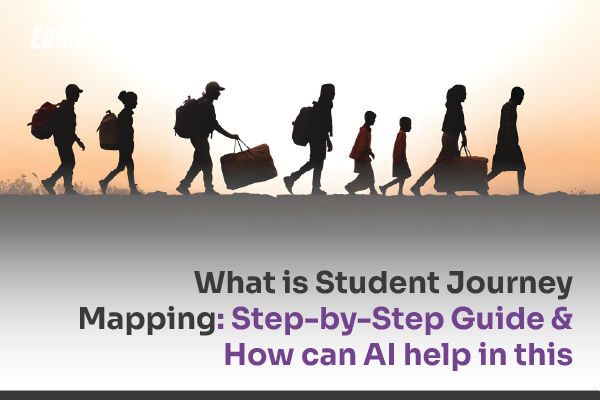In the digital transformation era, educational institutions are exploring innovative ways to premiumize services for students and faculty. One such innovation is using chatbots in higher education, which are designed to provide automated support and assistance.
The integration of chatbots in higher education has gained significant attention. Studies have shown both promising benefits and notable challenges associated with their use. A meta-analysis of 32 empirical studies involving 2,201 participants from 2010 to 2022 indicated that chatbot-assisted learning positively impacts various educational outcomes, suggesting the potential to enhance learning experiences.

Source: MPDI Study
However, the rapid advancement of generative AI, particularly AI-based chatbots, presents opportunities and challenges in higher education. A systematic review of 37 studies found undergraduates primarily use chatbots for skill development and knowledge acquisition. Nevertheless, concerns persist regarding these tools’ practical and appropriate implementation in teaching and learning contexts.
OpenAI has collaborated with California State University to launch a version of its chatbot specifically designed for education, targeting around 500,000 students and faculty to expand its presence in the academic field.
These findings highlight the importance of carefully considering chatbots’ advantages and limitations to effectively harness their potential in higher education.
What is a Chatbot for higher education?
A chatbot for higher education is an AI-powered virtual assistant that supports students, faculty, and administrators by automating tasks, providing information, and enhancing the overall learning experience. These chatbots utilise natural language processing (NLP) and machine learning (ML) to understand and respond to real-time student inquiries.
Some of the key Functions of Higher Ed Chatbots:
- Student Support: Answer FAQs about admissions, courses, deadlines, and financial aid.
- Academic Assistance: Provide tutoring, study resources, and personalised learning support.
- Administrative Help: Assist with course registration, campus navigation, and event reminders.
- Mental Health & Well-being: Offer resources and immediate responses for stress management.
- Faculty & Staff Support: Automate administrative tasks, grading assistance, and faculty-student communication.
Higher-ed chatbot use cases
- Enhanced Student Engagement: Chatbots serve as interactive platforms that allow students to access information and resources, creating a more engaging learning environment.
- 24/7 Support: Chatbots provide around-the-clock assistance, helping students with inquiries about admissions, course details, and campus events, which improves overall accessibility.
- Personalised Learning: Chatbots can customise educational content to address specific learning needs by analysing individual student interactions, thus enhancing comprehension and retention.
- Administrative Efficiency: Automating routine tasks such as enrollment processes, deadline reminders, and campus navigation alleviates administrative workloads, enabling staff to concentrate on more complex responsibilities.
How AI Enhances Chatbot Functionality
Artificial Intelligence (AI) enhances chatbot capabilities by enabling them to process and understand natural language. This allows chatbots to interpret and effectively respond to various student queries. Similarly, EDMO’s Conversation Intelligence revolutionises student interactions through AI-powered chatbots and voice assistants. These tools offer real-time, personalised support across multiple channels, from admissions inquiries to financial aid guidance.

These systems improve over time through machine learning algorithms, refining their responses based on past interactions. Furthermore, AI facilitates the integration of chatbots with other educational technologies, creating cohesive and adaptive learning environments. Here are some examples of U.S. colleges utilizing AI in higher education.
California State University (CSU): In February 2025, CSU partnered with OpenAI to implement a specialized version of ChatGPT across its 23 campuses, serving approximately 500,000 students and faculty members. This initiative aims to offer personalized tutoring, create study guides, and assist faculty with administrative tasks.
Georgia State University (GSU): GSU has implemented an AI chatbot named “Pounce” to assist students with enrollment and financial aid processes. During its initial rollout in the summer, Pounce engaged in about 185,000 interactions with incoming first-year students, a workload that would have been unmanageable for human staff alone. Research shows that courses utilizing Pounce have seen improved grades and higher retention rates, highlighting the chatbot’s positive effect on student success.
Harvard University: AI in Mental Health Support: Harvard University has investigated using AI-driven chatbots to enhance mental health initiatives. Applications like Wysa, Woebot, Youper, and Tess have attracted millions of users, providing emotional support and guidance during times of crisis. These tools have assisted over 1 million users worldwide by facilitating emotional well-being and therapy conversations. They have proven effective in reducing symptoms of anxiety and depression among students.
Summary
Chatbots in higher education offer promising benefits, such as enhanced student engagement, academic support, and administrative efficiency. AI-powered chatbots like “Pounce” at Georgia State University have improved student success by handling tasks like enrollment and financial aid, leading to better grades and retention rates. California State University partnered with OpenAI to introduce a chatbot for personalized tutoring and administrative help. Additionally, Harvard University utilizes AI-driven mental health chatbots, reaching over 1 million users and reducing anxiety and depression symptoms. Despite these successes, challenges remain in implementing AI chatbots effectively across different educational contexts.
Also Read:
How Can AI-Powered Chatbots Boost Enrollment Rates?
EDMO joins forces with The Drona School to assist potential study abroad students
University Enrollment in the Digital Age: A Guide
Why Are Higher Ed Employees Burning Out? New Insights From Study







